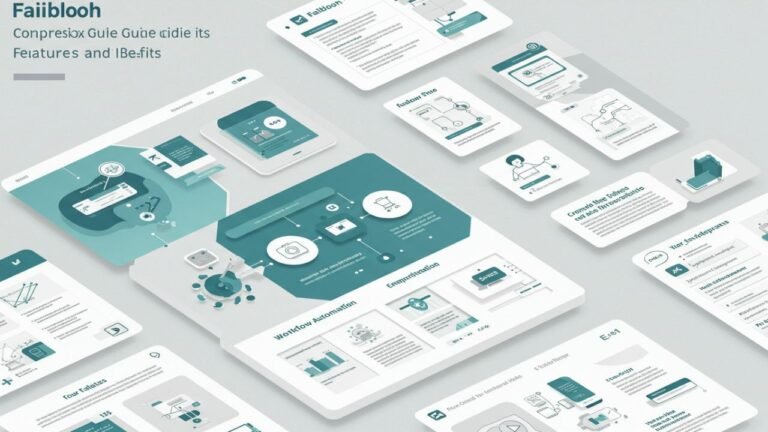Exact Age Gap Calculator Your Complete Guide to Precise Age Difference Calculations
Understanding the exact age difference between two people has, quite frankly, been a determining factor in new relationships, family planning, legal matters, and also in the realm of celebrity news. An accurate age gap calculator is able to demonstrate the age difference even by the day.
This thorough manual is a treasure of information about exact age gap calculators, their working mechanism, the reasons for the precision being essential, and also the proper way of understanding the results.
What Is an Exact Age Gap Calculator?
An exact age gap calculator is an advanced online tool that calculates explicitly the minimum time difference between two dates of birth. Compared to simple year-based approximations, which most people use in their heads, these tools offer detailed breakdowns by year, month, and day, down to the most minor units, with complete accuracy.
Defining “Exact” in Age Calculations
When we put “exact” in front of the term “exact age gap calculator,” we understand that it means pinpointing several key accuracy factors that set these devices apart from approximate approaches.
Complete Date Processing: An exact age-gap calculator requires full dates of birth—day, month, and year—for both persons whose age difference is being calculated. This thoroughness enables the tool to determine results precisely rather than provide rough calculations based solely on birth years.
Calendar Complexity Handling: The machines also adjust for leap years, varying month lengths (28-31 days), and even details of the Gregorian calendar system, which people often forget when calculating by hand.
Detailed Result Breakdown: If the age difference is only 5 years, the exact calculator may reveal even more information, such as “5 years, 7 months, and 14 days,” providing the specificity demanded in many situations.
Mathematical Accuracy: That is why exact age-gap calculators use standard algorithms that can be tested and verified to produce the same results every time, thereby excluding human error.
Why Precision Matters in Age Gap Calculations?
The choice between approximate and exact age-gap calculations has a significant impact on real-world use cases.
Legal Applications: Age-related legal thresholds for consent, employment protection, retirement benefits, and contractual capacity are just some examples where day-precise calculations are often required. The phrase “almost 18” means a lot of things, but legal ones are not among them.
Medical Dosing: The dosage of pediatric medicines often depends on the exact age in months or even days, especially in babies and toddlers, whose development is rapid.
Relationship Transparency: The case when age differences are significant to partners and exact age-gap information is available to prevent surprises later. If you say that you and your partner are “about 5 years apart” but the real difference is 6 years, 11 months, you may later face trust issues.
Record Verification: Genealogists and historians rely on exact age differences to confirm relationship identifications in records, where they locate age differences between parents and children that are impossible, thus indicating errors in documentation.
How Does an Exact Age Gap Calculator Work?
Delving into the technical side of exact age-gap calculators not only explains their pinpoint accuracy but also helps identify reliable tools.
The Calculation Process Step-by-Step
Date Input Validation: The best exact age gap calculators that you can find online will verify your entered data first. If that is the case, Moz’s algorithm is able to identify and flag instances in which a certain date does not exist (February 30th) but it is also capable of checking for future dates as well as format consistency (MM/DD/YYYY vs. DD/MM/YYYY).
Date Normalization: The calculator changes the two dates to one standard internal format, either Julian Day Numbers or Unix timestamps. In both instances, dates become continuous numerical sequences.
Temporal Distance Computation: Equipped with normalized dates, the calculation finds the absolute difference between them and it also adjusts for calendar irregularities like leap years and different lengths of months.
Result Decomposition: The overall difference is translated into the elements of a language known by people—the number of full years, the leftover months, and the days that are still there—by using reverse calendar arithmetic.
Output Formatting: The findings are thus being handed over to users in a variety of formats (total days, year/month/day breakdown, percentage of lifetime) so that different users get what is most appropriate for their needs.
Factors Affecting Algorithm Complexity
Leap Year Logic: Actually, a detailed age difference calculation should follow the full leap year determining rule leaps are years that can be divided by 4; however, among these years that are also centuries and divisible by 400, the exceptions are those. So, for example, the year 2000 is the leap year, 1900 is not.
Month Boundary Handling: Suppose you are counting from January 31st and the dates are given up to March 1st? In that case, the calculator has to determine whether this time is equal to “1 month” or “1 month and 1-3 days” depending on the length of the month of February in the year considered.
Negative Date Handling: Quality calculators automatically determine which date is earlier, allowing users to input dates in any order while still producing positive age gap results.
Precision Limitations: While in theory calculators could compute age gaps to the microsecond, practical age-gap calculators stop at the day level, since birth records rarely include the precise time of birth.
Features of Quality Exact Age Gap Calculators
Not all age gap calculators offer the same level of functionality. Recognizing superior tools helps ensure accurate results.
Essential Calculator Features
Multiple Input Format Support: An age difference calculator that is very accurate should also be able to accept different date formats (MM/DD/YYYY, DD/MM/YYYY, YYYY-MM-DD) and recognize the format that the user has used automatically without requiring the user to indicate it, thus greatly reducing errors in inputs.
Comprehensive Result Display: Leading calculators show the results in different formats at the same time—total days counted, year/month/day breakdown, and, if required, total hours or weeks.
Leap Year Indicators: Some sophisticated instruments display the number of leap years that occurred during the period being calculated, allowing the user to understand the factors that influenced the total number of days.
Reverse Calculation Options: In a few tools one can put the desired age difference and one date of birth and get the other person’s date of birth calculated.
Mobile Responsiveness: An age gap calculator that meets the standard should still be functional on mobile devices, whereby the date picker is touch-friendly and the layout is responsive.
Advanced Calculator Capabilities
Batch Calculation Mode: Some high-end instruments allow the simultaneous computation of multiple age differences, an excellent feature for researchers studying the pattern of siblings’ age gaps or examining genealogical records.
Export Functionality: Expert calculators offer the feature of exporting the results in different formats like CSV or PDF for the documentation, research records, or legal submissions.
Statistical Context: Top-tier devices also come with the option to calculate comparative statistics that show how the age difference calculated relates to the average age differences in a certain demographic group.
Privacy Guarantees: First-rate calculators handle all calculations locally in your browser, so birth date information is not sent to external servers.
Common Uses for Exact Age Gap Calculators
Such instruments have potential for use in different contexts, i.e., personal, professional, or academic.
Relationship Age Gap Analysis
Dating Decisions: A single person will resort to using an exact age-gap calculator to clarify the age difference with a potential partner, or check the birthdays famous birthdays which will then determine whether to go ahead with the relationship or not, thereby avoiding unnecessary emotional investments.
Existing Relationship Understanding: Sometimes, an already established couple may, out of curiosity, figure out their exact age difference, or, when a family planning timeline discussion comes up, consider how age differences affect it.
The Half-Plus-Seven Rule: This is the best-known dating rule according to which the minimum age of a partner that can be morally accepted is half of your age plus seven. A relationship can be matched with this dating standard by a precise age-gap calculator.
Family Introduction Preparation: Some people, by calculating the exact difference before introducing a significantly older or younger partner to the family, do it so as to help the family get ready for possible questions or concerns.
Celebrity and Public Figure Comparisons
Entertainment Curiosity: Most of the time, fans resort to exact age-gap calculators to figure out the real age difference between two celebrities of a couple, particularly when the age gap is large.
Political Analysis: Voters and political pundits notice the age differences of political leaders with various demographic groups and later deduce which generation is being represented.
Historical Figure Studies: Historians and students use precise age-gap calculations to gain insights into contemporary relationships and influences.
Media Discussions: Entertainment media often references exact age differences when discussing celebrity couples, which are then used to shape cultural discussions.
Comparative Career Timelines: The use of exact age gaps to compare the timing of success between entertainers of different ages draws attention to how one achieved stardom faster than the other.
Professional and Educational Applications
Workplace Age Discrimination Cases: Lawyers specializing in employment law use very detailed age-gap calculators to indicate the difference in age which is a factor that supports discrimination scenarios, mostly those related to age groups that are protected by law.
Educational Placement: The exact age locally calculated with respect to the enrollment cutoff date is what school administrators rely on when they decide on the grade of placement for students that are at the border of two grades.
Research Study Cohorts: University researchers that study the impact of age, have to get very precise age calculation data so that they can have a clear and distinct group of people in developmental or medical research.
Sports Age Divisions: The eligibility for age-restricted divisions is determined by youth sports organizations through exact age calculations thus, competition is fair and equal among participants.
Mentorship Program Matching: There are mentorship programs that think about the age differences when they match mentors with mentees, and use the precise calculation to strengthen relationship dynamics.
The Best Exact Age Gap Calculator How to Choose
There are many calculators that you can find online but selecting the right tool will give you a correct result and a good functionality.
Evaluation Criteria
Calculation Accuracy: To ensure that the Age Difference Calculator is functioning properly you should verify the results it gives you for the known dates (e.g. your date of birth) and make sure that the results are correct, and that leap years are taken into account properly.
Interface Clarity: An ideal age-gap calculator features an easy-to-understand layout with clearly labeled areas, date selection controls being self-explanatory, and the results being displayed in the most understandable manner.
Result Comprehensiveness: The best tools have the ability to represent the results in more than one format (such as days, months/years, decimal years) rather than just providing one output format.
Privacy Protection: You should make certain that the calculator executes all of its functions locally in your browser without sending the dates of birth to remote servers or keeping your personal data secure.
Mobile Functionality: See if the calculator can be used on a mobile device where the controls are designed for operating with a finger and the layout changes accordingly.
Extra Features: Select the extra features that interest you the most and decide whether they are useful for you or not. Some of such features may be statistical context, celebrity comparisons, or export capabilities.
Understanding Age Gap Results
Raw calculation results require contextual interpretation to extract meaningful insights.
Statistical Context for Age Gaps
Distribution Patterns: Age-gap distributions are right-skewed, meaning that while most couples have a small age gap (0-5 years), there is a long tail extending to huge gaps (20+ years).
Cultural Variations: Compared with Western societies, Asian cultures have slightly larger average age gaps (3-4 years), while Scandinavian countries have some of the smallestsmallest average age gaps (less than 2 years).
Changing Trends: The changes in trends over the last few decades have been a bit of a contradiction – on one side, there are smaller average age gaps in general; on the other hand, there is more acceptance and occurrence of large age gaps (10+ years).
Same-Sex Relationship Patterns: Age gap distribution in the research of same-sex couples is far more varied than that of heterosexual couples, while the age ordering is less consistent.
Life Stage Considerations
Developmental Phase Alignment: The difference of 5 years between 18-23 and 40-45 is not the same, therefore, the life stage is much more important than the absolute numbers.
Career Timing Impacts: Different ages may mean that partners reach career milestones (promotions, retirement) at different times, thus, household income and work-life balance trajectories getting changed .
Social Circle Compatibility: A big age difference between partners may imply that their respective friend groups are at different life stages, hence, social activities and couple friendships may also be affected.
Family Planning Windows: Age differences complicate the issue of determining the urgency of family planning when the couple’s goal is having children, especially if the older female partner’s fertility is declining.
Retirement Planning Complexity: In case there is a big age gap between the two partners, they will most probably retire at different times, thus, requiring detailed financial and lifestyle planning for those transitions periods.
Cultural and Social Interpretation
Acceptability Thresholds: Regardless of cultural variations in attitudes, inquiry into people’s views through surveys reveals that most individuals think age differences of less than 10 years are broadly acceptable, and the level of uneasiness goes up with bigger differences.
Gender Double Standards: The social response is very different depending on the gender pattern of the couple, and couples consisting of an older man and a younger woman are getting less of the criticism than those with the reversed arrangement.
Class and Education Effects: Education level and socioeconomic status are two factors that can lead to higher acceptance of different age-gap patterns.
Urban vs. Rural Differences: People living in cities are generally more open to larger age gaps than those living in villages or small towns, which are mostly characterized by traditional values.
Generational Attitude Changes: The views of Millennials and Gen Z towards different age gap configurations are very different from those of Baby Boomers, who are much more accepting.
Exact Age Gap Calculator vs. Simple Age Calculation
Understanding the differences between exact age gap calculators and simple age calculations can help you realize when it is necessary to be exact.
Precision Comparison
Year-Based Estimates: The most basic calculation of the age difference just from the year of birth (2000 vs. 1995 = 5 years) doesn’t take into account the exact birth dates within those years, and therefore, the real age difference can be off by almost 2 years.
Month-Level Precision: For example, the two individuals may have been born in 1995 and 2000 respectively, but one in January and the other in December, therefore the actual age difference can be from 4 years and 1 month to 5 years and 11 months, which is pretty much a substantial difference.
Day-Level Accuracy: An exact age gap calculator takes into account the exact dates of birth and, therefore, it is the level of accuracy that is required in legal, medical, or any other cases where the exact age is strictly necessary.
Leap Year Accounting: Most simple calculations consider a year to have 365 days.At the same time, exact calculators correctly account for leap years, thus preventing the errors from accumulating over more extended periods of time.
Current Date Consideration: Simple methods sometimes don’t account for whether the younger person’s birthday has already occurred this year, leading to one-year errors that calculators can avoid.
When Precision Is Essential?
Legal Age Thresholds: The identification of the legal ages at which a person can give consent to sexual activity, sign contracts, vote, or drink requires exact calculations down to the day, and failure to follow them can lead to legal consequences.
Medical Applications: Medicine dosing for infants and children should be based on their exact age in months or days and therefore requires the utmost precision, which approximate calculations cannot provide.
Benefit Eligibility: Retirement benefits, Social Security, pension plans, and age-restricted programs are among the most common examples of benefits that depend on the exact calculation of age as a condition of eligibility.
Competitive Sports: Age divisions in youth sports are determined by exact cutoff dates (most commonly January 1st), thus making day-precise age calculations a must for eligibility verification.
Immigration and Citizenship: Different age-related requirements for various immigration statuses, as well as citizenship applications, call for the documentation and calculation of age to be done with utmost precision.
When Approximations Suffice
Casual Conversation: When discussing age gaps informally, year-based approximations usually provide sufficient context without requiring exact precision.
General Compatibility Assessment: For initial dating decisions, knowing someone is “about 7 years older” provides enough information without needing exact months and days.
Historical Context: In the case of talking about history characters or old family trees, it is quite common that approximate dates based on years are as accurate as the documents that can be found.
Huge Differences in Ages: In case the intervals are over 20 years, the distinction between 23 years, 2 months, and 24 years is of little importance compared to the basic fact of a large gap.
Broad Statistical Analysis: Population-level research about age gap trends typically uses year-based data since that’s what most demographic datasets provide.
Exact Age Gap Calculator for Different Relationship Types
The significance and calculation of age gaps vary across relationship categories.
Romantic Partnerships
Initial Dating Decisions: Singles often employ precise age gap calculators either right before their first meeting or shortly after to determine whether they feel comfortable with the particular age difference.
Relationship Progression: As couples get intimate, they sometimes resort to calculating exact gaps when discussing marriage, living together, or making a long-term commitment.
Addressing Family Concerns: Families questioning age differences and the exact calculations utilized as a tool help to focus the talks more on facts than guesses.
Anniversary Milestones: Not many couples are those who celebrate the occasion when their relationship length becomes more than their age difference and the moment when time together is more than time apart.
Compatibility Assessment: Age is just one factor that decides compatibility; partners who know the exact gap can deliberately consider the possible challenges that come from age-related differences.
Sibling Relationships
Optimal Spacing Goals: Parents, after thinking about the Future of their families, usually decide on particular age gaps (mostly 2-3 years) that research shows are best for resource allocation and the quality of sibling relationships.
Close-Age Sibling Dynamics: Brothers or sisters with an age difference of less than 2 years normally become very close as they are at similar developmental stages and have the same peer groups.
Large-Gap Considerations: The family dynamics of children with an age gap of more than 5 years are quite different from those of children with a smaller age gap; thus, the elder ones, sometimes, may even take up a parental role.
Twin Birth Timing: In some cases, twins can be born with a few minutes’ age difference if one is delivered just before midnight and the other immediately after, which can matter for astrological or legal purposes.
Blended Family Spacing: Age differences between step-siblings and adopted siblings may not follow the usual birth interval pattern, leading to unique family dynamics.
Conclusion
Exact age gap calculators come in handy with those who require accurately-aged difference data in relationships, legal matters, family planning, or simply out of personal curiosity. These devices do not stop at mere estimations and thus deliver accuracy to the very point of years, months, and days, which in turn removes human errors as well as confusion caused by leap years and varying month lengths. Their chief benefit is the proper usage of the device and the right understanding of the results.
Even though the mathematical precision that these instruments offer is comforting, it is still not able to be replaced by the emotional compatibility, emotional maturity, or shared goals of life. Differences in age may bring about uncertainties, however, the health of the relationship is much more reliant on communication, respect, and trust than just on figures. If used from the right perspective, exact age gap calculators can be a great aid in making informed decisions, but do remember that you should also bring in your emotions.






